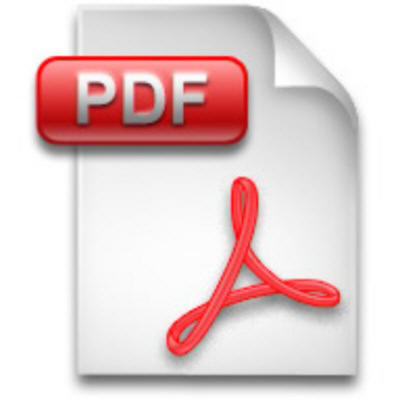 |
-
حکومت مندی مدرن در ایران عصر ناصری: ظهور جمعیت و فنون اداره آن
علیرضا صدرا و قاسم نعمتی. "حکومتمندی مدرن در ایران عصر ناصری: ظهور جمعیت و فنون اداره آن." سیاست 51، 4 (1400): .
نوع مقاله : مقاله پژوهشی نویسندگان 1 استاد علوم سیاسی، دانشکده حقوق و علوم سیاسی، دانشگاه تهران 2 دانشجوی دکتری علوم سیاسی، دانشکده حقوق و علوم سیاسی، دانشگاه تهران چکیده هدف از این نوشتار، تبارشناسی دقیق رخدادهای تاریخی خردی است که ابعاد و زوایای مختلف دولت مدرن در ایران معاصر را شکل داده، و ویژگیهای مهم و مشاهدهشدنی در دولتهای کنونی به آن بخشیدهاند. متفاوت از بیشتر نظریهپردازان دولت، در این پژوهش استدلال شد که تبار فکری و گفتمانی دولت مدرن در ایران به نیمه دوم سده نوزدهم و بهطور ویژه به عصر ناصری بازمیگردد؛ و میتوان این واقعیت را در میان برخی رویدادهای فراموششده و گاه حاشیهای جستوجو کرد. بر این اساس، پرسشهای پژوهشی زیر مطرح شدند: 1. چه شرایطی سبب پیدایش دولت مدرن در ایران سده نوزدهم و بهویژه عصر ناصری شد؟ 2. چگونه رویدادهایی مانند کمیابی مواد غذایی به تغییرات جمعیتی و پیدایش دولت مدرن منجر شدند؟ با الهام از مفهوم حکومتمندی فوکو، در فرضیه پژوهشی بیان شد که وقوع برخی رویدادها (همهگیری و ناامنی غذایی) سبب ظهور انگاره جدید جمعیت و در پی آن تغییر در فنون حکمرانی و گذار به حکومتمندی جدید دولت در ایران شد که مبتنی بر سامانه امنیت و نیز سامانه تنظیمی- انضباطی بود. جمعیت بهمنزله سوژه نیازها، و تمایلات در دستان حکومت پدیدار شد، و موضوع فنون جدید حکومت واقع شد. با اتکا به روش گردآوری و تحلیل شواهد تاریخی و دادههای کیفی موجود در رسالههای سیاسی، خاطرات، اندرزنامهها و سفرنامههای سده نوزدهم، و نیز در متون سیاسی مرتبط با شکلگیری دولت مدرن در ایران درستی فرضیه تاثیرگذاری رخدادهای تاریخی خرد بر پیدایش دولت تأیید میشود. کلیدواژهها
عنوان مقاله [English] Modern Governmentality in Iran’s Nasserite Era: The Emergence of Population and its Management Techniquesنویسندگان [English] - Alireze Sadra 1
- Ghasem Nemati 2
1 Professor, Department of Political Science, Faculty of Law & Political Science, University of Tehran, Iran 2 A PhD Candidate in Political Science, Faculty of Law & Political Science, University of Tehran, Iran چکیده [English]Modern state in Iran does not have a long history, considering that it has been established in the mid-nineteenth century. Due to its domestic and external conditions, this state has acquired unique characteristics. For this reason, the combination of traditional and modern governance as well as the various discourses and mechanisms of the modern state have influenced the public image of the state in Iranian contemporary society. To understand the special nature of the modern state in Iran, there is a need to analyze the historical stages through which the state has been evolving as a vital element in the lives of Iranians today. A large group of scholars attribute the formation of the modern state in Iran to the enactment and enforcement of the 1906 constitution (Qānon-e asāsi-ye mashrotâh) in Qajar era, or the rise of the first Pahlavi ruler in 1925. However, the authors in this paper argue that the conditions for the establishment of a modern state in Iran go back to the Nasserite era (decades before the adoption of the 1906 Constitution). The study of the origin of the modern state must go beyond the official histories and be concentrated on careful consideration of the relevant events. The occurrence of some seemingly insignificant and marginal events in the mid-Nasserite era gave rise to a new concept of population— one of the important consequences of which was a change in structures and processes of governance to better manage the population. The rulers had previously considered Iranian population to be without originality, authenticity, and independence, but the attitude of the ruling elites toward the public had been changing. The population was becoming one of the major elements of state power with the potential to overshadow other factors of power.
The main objective of this analysis is to find answers to the following research questions: 1. what conditions led to the emergence of modern government in nineteenth-century Iran, especially in the Nasserite era? 2. How did events such as epidemics and food shortages lead to the rise of the population and the emergence of the modern state in Iran? Inspired by Michel Foucault’s conceptualization of governmentality which includes the study of processes and approaches by which states oversee all aspects of citizens' lives, our research hypothesis has been formulated. It is asserted that the occurrence of certain events (epidemics and food scarcity) in Iran has given rise to a new concept of population which has in turn led to the transition to a new form of governmentality, initially based on two apparatuses of security and discipline. To find suitable answers to the research questions and test the hypothesis, we collect and analyze quantitative data in nineteenth-century treatises and documents, as well as in academic texts related to the formation of modern state in Iran. The conclusion is that the micro-events (smallpox epidemic and grain shortage) affected the various dimensions of the processes of the formation of Iran’s modern state with its unique characteristics. Although other factors such as the gradual development of cities, the growth of urbanization, and the delimitation of the country's borders in this period have also contributed to the emergence of the population and the evolution of Iran’s modern state, but the importance of these two events are undeniable. By understanding the origin and true nature of modern state in Iran, we will be able to deal with many pressing political and socio-economic problems. This is a useful endeavor, given the urgency of addressing challenges facing the country today through effective governance.
کلیدواژهها [English] - Modern State
- Nasserite Era
- Epidemic
- Food Scarcity
- دانلود

|
 |